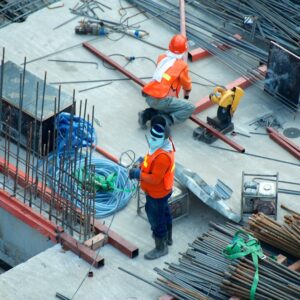Efficiency remains key in the dynamic realm of commercial construction. Tight deadlines, intricate projects and substantial stakes necessitate an essential reliance on technology to maintain competitiveness; furthermore, it ensures timely delivery of projects within budgetary limits.
This article embarks into exploring the revolutionizing role that technology plays in commercial construction: streamlining processes; enhancing communication–ultimately driving success.
Streamlining Design and Planning
The design and planning phase in commercial construction experiences a profound impact from technology, particularly through Building Information Modeling (BIM) software.
This software empowers architects, engineers, and contractors to craft intricate 3D models of buildings; thus enhancing the visualization and coordination of project elements. Notably promoting collaboration among stakeholders- it minimizes errors and conflicts while heightening decision-making efficiency during each stage of the design process.
Enhancing Project Management
In commercial construction, technology has ushered in a revolution in project management; it offers an array of tools and platforms that streamline workflows, track progress–all while enhancing effective communication.
Teams can harness the power of project management software to centralize data: they create schedules, assign tasks – even monitor performance in real-time. Moreover—through cloud-based systems—project stakeholders gain universal access to this information from anywhere; thus promoting seamless collaboration and informed decision-making.
Improving On-Site Operations
Technology has transformed on-site operations, adopting tools and equipment to enhance efficiency and safety. Field workers utilize mobile applications for accessing project documents, submitting reports on the move; they also use it to communicate with team members in real-time.
Aerial imaging technology—alongside drones—offers valuable insights into project progress: site conditions can be observed continuously while potential safety hazards are identified promptly–a strategic approach that enables making informed decisions effectively mitigating risks.
Utilizing Prefabrication and Modular Construction
Revolutionizing the construction process of commercial buildings, prefabrication and modular techniques offer several advantages: faster build times; a reduction in waste–enhancing quality control.
Advanced manufacturing technologies such as robotic fabrication and 3D printing contribute to this revolution by allowing for off-site production of precision-engineered building components which are subsequently assembled on-site. This method not only streamlines construction operations but also boosts efficiency while minimizing disturbances to nearby areas.
Implementing Sustainable Practices
In advancing sustainable practices in commercial construction, technology assumes a crucial role: it facilitates everything from energy-efficient building design to the integration of renewable energy.
Systems for building automation monitor and optimize not only lighting and HVAC systems but also energy usage; this reduces operational costs while minimizing environmental impact – an exemplary demonstration of effective resource management.
Furthermore–promoting environmental stewardship and conserving resources–construction projects now increasingly utilize sustainable materials like recycled steel, reclaimed wood; low-emission concrete has also seen a surge in popularity due its eco-friendly nature.
Design Flexibility and Customization
Despite their efficiency, insulated wall panels do not compromise on design flexibility or customization options. With a wide range of materials, finishes, and configurations available, wall panels can be tailored to meet the specific design requirements and aesthetic preferences of each project.
Whether it’s achieving a modern, sleek look with metal composite panels or adding texture and warmth with wood veneer panels, the design possibilities are virtually limitless.
Ensuring Quality Assurance and Safety
In commercial construction, technology indeed holds a vital role in ensuring compliance with industry standards and regulations: it prioritizes quality assurance and safety. Advanced sensors–alongside monitoring systems–not only track construction quality; they also detect defects in real-time. This capability allows for timely corrections; hence preventing the need for costly rework.
Wearable technology—specifically smart helmets and safety vests—further enhances worker safety: these innovations monitor vital signs, detect hazards; they even provide real-time alerts.
Conclusion
Commercial construction has undergone a revolutionary transformation through technology, which has impacted all facets of the building process: from design and planning to on-site operations; even project management and sustainability are not exempt.
By harnessing state-of-the-art tools–leveraging them with precision—it is possible for construction professionals to achieve remarkable outcomes: they can maximize efficiency, boost productivity significantly —enhance safety measures substantially—and ultimately deliver superior quality projects that align seamlessly with the demands of today’s rapidly evolving market.
The future landscape in commercial construction appears exceptionally promising as technological advancements persist: this evolution presents limitless opportunities—not only for innovation but also for substantial progress ahead.






